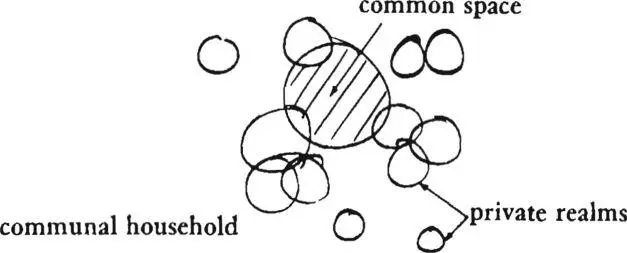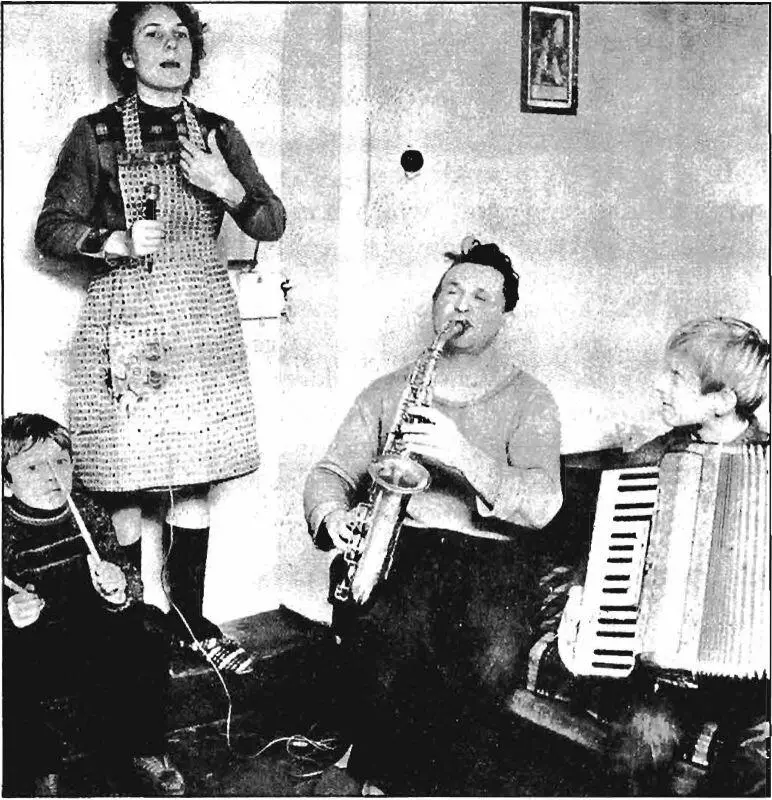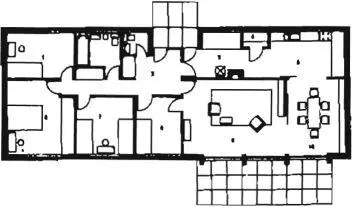Christopher alexander - A pattern language
Здесь есть возможность читать онлайн «Christopher alexander - A pattern language» весь текст электронной книги совершенно бесплатно (целиком полную версию без сокращений). В некоторых случаях можно слушать аудио, скачать через торрент в формате fb2 и присутствует краткое содержание. Жанр: Прочая научная литература, на английском языке. Описание произведения, (предисловие) а так же отзывы посетителей доступны на портале библиотеки ЛибКат.
- Название:A pattern language
- Автор:
- Жанр:
- Год:неизвестен
- ISBN:нет данных
- Рейтинг книги:3 / 5. Голосов: 1
-
Избранное:Добавить в избранное
- Отзывы:
-
Ваша оценка:
- 60
- 1
- 2
- 3
- 4
- 5
A pattern language: краткое содержание, описание и аннотация
Предлагаем к чтению аннотацию, описание, краткое содержание или предисловие (зависит от того, что написал сам автор книги «A pattern language»). Если вы не нашли необходимую информацию о книге — напишите в комментариях, мы постараемся отыскать её.
A pattern language — читать онлайн бесплатно полную книгу (весь текст) целиком
Ниже представлен текст книги, разбитый по страницам. Система сохранения места последней прочитанной страницы, позволяет с удобством читать онлайн бесплатно книгу «A pattern language», без необходимости каждый раз заново искать на чём Вы остановились. Поставьте закладку, и сможете в любой момент перейти на страницу, на которой закончили чтение.
Интервал:
Закладка:
“And what comes out of your open pan?” he asked.
“An entirely different kind of family. Not exclusive, like your families, and not predestined, not compulsory. An inclusive, unpredestined and voluntary family. Twenty pairs of fathers and mothers, eight or nine ex-fathers and ex-mothers, and forty or fifty assorted children of all ages.” (Aldous Huxley, Island , New York: Bantam, 1962, pp. 89-90.)
Physically, the setting for a large voluntary family must provide
75 the family
for a balance of privacy and communality. Each small family, each person, each couple, needs a private realm, almost a private household of their own, according to their territorial need. In the movement to build communes, it is our experience that groups have not taken this need for privacy seriously enough. It has been shrugged off, as something to overcome. But it is a deep and basic need; and if the setting does not let each person and each small household regulate itself on this dimension, it is sure to cause trouble. We propose, therefore, that individuals, couples, people young and old—each subgroup—have its own legally independent household—in some cases, physically separate households and cottages, at least separate rooms., suites, and floors.
The private realms are then set off against the common space and the common functions. The most vital commons are the kitchen, the place to sit down and eat, and a garden. Common meals, at least several nights a week, seem to play the biggest role in binding the group. The meals, and taking time at the cooking, provide the kind of casual meeting time when everything else can be comfortably discussed: the child care arrangements, maintenance, projects—see communal eating(147).
This would suggest, then, a large family room-farmhouse kitchen, right at the heart of the site—at the main crossroads, where everyone would tend to meet toward the end of the day. Again, according to the style of the family, this might be a separate building, with workshop and gardens, or one wing of a house, or the entire first floor of a two or three story building.
There is some evidence that processes which generate large voluntary group households are already working in the society. (Cf. Pamela Hollie, “More families share houses with others to enhance ‘life style,’ ” Wall Street Journal , July 7, 1972.)
One way to spur the growth of voluntary families: When someone turns over or sells their home or room or apartment, they first tell everyone living around them—their neighbors. These neighbors then have the right to find friends of theirs to take the place—and thus to extend their “family.” If friends are able to move in, then they can arrange for themselves how to create a functioning family, with commons, and so on. They might build a connection between the homes, knock out a wall, add a
TOWNS
room. If the people immediately around the place cannot make the sale in a few months, then it reverts to the normal marketplace.
Therefore:
Set up processes which encourage groups of 8 to 12 people to come together and establish communal households. Morphologically, the important things are:
1. Private realms for the groups and individuals that make up the extended family: couple’s realms, private rooms, sub-households for small families.
2. Common space for shared functions: cooking, working, gardening, child care.
3. At the important crossroads of the site, a place where the entire group can meet and sit together.
 |
| *£♦ |
Each individual household within the larger family must, at all costs, have a clearly defined territory of its own, which it controls— your own i-iome(79) ; treat the individual territories according to the nature of the individual households— house for A SMALL FAMILY(76), HOUSE FOR A COUPLE(77), HOUSE FOR one person(78); and build common space between them, where the members of the different smaller households can meet and eat together— common areas at the heart(129), communal eating(147). For the shape of the building, gardens, parking, and surroundings, begin with building complex(95)- • • •
380 76 HOUSE FOR A SMALL
FAMILY*

381
. . . according to the family (75), each nuclear family ought to be a member household of a larger group household. If this is not possible, do what you can, when building a house for a small family, to generate some larger, possible group household, by tying it together with the next door households; in any case, at the very least, form the beginning of a house cluster (37)-
In a house for a small family, it is the relationship between children and adults which is most critical.
Many small households, not large enough to have a full fledged nursery, not rich enough to have a nanny, find themselves swamped by the children. The children naturally want to be where the adults are; their parents don’t have the heart, or the energy, to keep them out of special areas; so finally the whole house has the character of a children’s room—children’s clothes, drawings, boots and shoes, tricycles, toy trucks, and disarray.
Yet, obviously few parents feel happy to give up the calm and cleanliness and quiet of the adult world in every square inch of their homes. To help achieve a balance, a house for a small family needs three distinct areas: a couple’s realm, reserved for the adults; a children’s realm, where children’s needs hold sway; and a common area, between the two, connected to them both.
The couple’s realm should be more than a room, although rooms are a part of it. It is territory which sustains them as two adults, a couple—not father and mother. Other parts of their lives are involved with children, friends, work; there must be a place which becomes naturally an expression of them as adults, alone. The children come in and out of this territory, but when they are there, they are clearly in the adults’ world. See couple’s realm (136).
The children’s world must also be looked upon as territory that they share, as children, children’s realm (137); here, it is important to establish that this is a part of the house, in balance with the others. Again, the critical feature is not that adults are
“excluded” but that, when they are in this world, they are in children’s territory.
The common area contains those functions that the children and the adults share: eating together, sitting together, games, perhaps bathing, gardening—again, whatever captures their needs for shared territory. Quite likely, the common territory will be larger than the two other parts of the house.
Finally, realize that this pattern is different from the way most small family homes are made today. For example, a popular current conception, comparable to this, but quite different, is a suburban two fart house: sleeping and commons.
 |
| A typical suburban t |
Even though there is a “master bedroom” the sleeping part of the house is essentially one thing—the children are all around the master bedroom. This plan does not have the distinctions we are arguing for.
Читать дальшеИнтервал:
Закладка:
Похожие книги на «A pattern language»
Представляем Вашему вниманию похожие книги на «A pattern language» списком для выбора. Мы отобрали схожую по названию и смыслу литературу в надежде предоставить читателям больше вариантов отыскать новые, интересные, ещё непрочитанные произведения.
Обсуждение, отзывы о книге «A pattern language» и просто собственные мнения читателей. Оставьте ваши комментарии, напишите, что Вы думаете о произведении, его смысле или главных героях. Укажите что конкретно понравилось, а что нет, и почему Вы так считаете.












